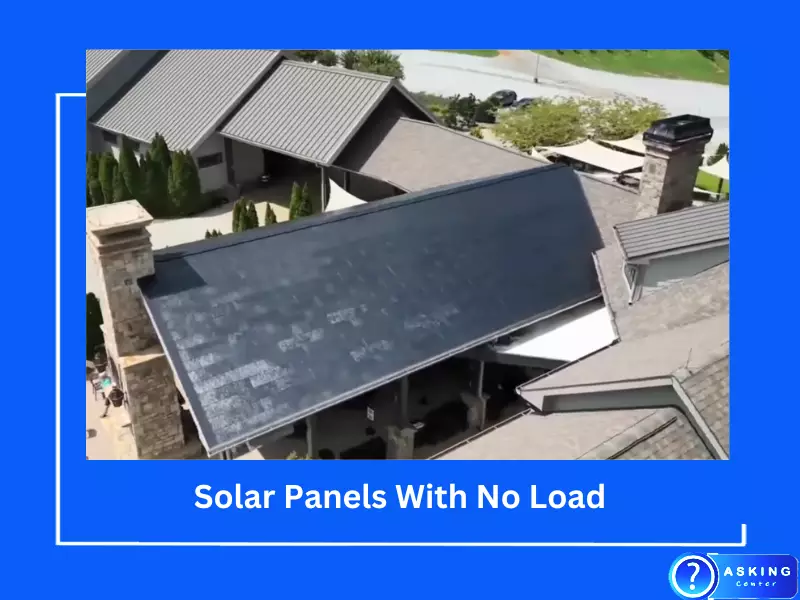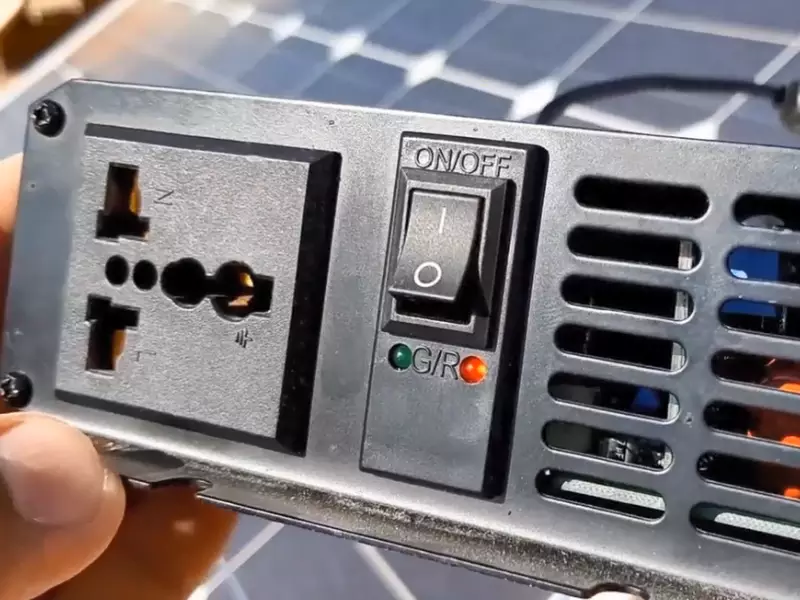It’s undeniable that the world’s energy landscape is undergoing a significant transformation. The sun, an abundant and renewable source of energy, has become an integral part of this change.
Solar panels, the workhorses behind this revolution, convert sunlight into usable electricity, powering everything from small gadgets to entire cities. These panels, however, are complex devices, and their performance is influenced by a myriad of factors – one of which is load.
Delving into the heart of solar panel operation, a load is anything that consumes the electricity produced by these panels. But what happens when there is no load? In short, when a solar panel is disconnected from any form of load, it may lead to an increase in voltage that could potentially damage the panel and associated systems.
Understanding the Science of Solar Energy
The Magic Behind Solar Energy
The essence of solar energy is rooted in the elegant, natural process known as photosynthesis, where sunlight is transformed into energy. Solar panels mimic this process but convert sunlight into electricity through the photovoltaic effect. In this fascinating process, photons from the sun strike the solar cells, liberating electrons and generating an electric current.

The Role of Solar Panels in Energy Conversion
Solar panels play a central role in harnessing solar energy. Comprised of several photovoltaic cells, they capture sunlight and transform it into electric current. This electricity is then used to power various loads, from household appliances to industrial machinery.
Practical Examples of Solar Energy Use
From powering homes and charging electric cars to running irrigation systems in agricultural fields, solar energy has diverse applications. Moreover, in remote areas where conventional electricity is inaccessible, solar panels provide a sustainable solution to energy needs.
Diving Into the World of Solar Panel Loads
Understanding Load in the Context of Solar Panels
In the realm of solar panels, the term “load” refers to any device or system that consumes the electricity produced by the panels. This can be anything from a simple light bulb to complex machinery.
The Role of Load in Solar Energy Production
Loads are crucial in a solar panel system because they absorb the electrical output generated. They help maintain an ideal voltage, ensuring the efficient operation of the panel and preventing potential damage due to high voltage conditions.
Illustrative Examples of Solar Panel Loads
Consider a solar-powered house as an example. The home’s appliances, lights, and HVAC system all act as loads, consuming the electricity produced by the rooftop solar panels.
Deciphering the ‘No Load’ Scenario in Solar Panels
Defining ‘No Load’ in Solar Panels
When a solar panel operates under “No Load” conditions, it means that the panel is disconnected from all loads. This could occur intentionally, such as during maintenance, or unintentionally, as in the case of a system malfunction.
The Implications of Operating Solar Panels Without a Load
In a “No Load” condition, since there is no electricity consumption, the panel’s voltage can rise dangerously high. This can potentially lead to arcing and fire hazards, panel degradation, and reduced lifespan of the solar panel system.
Real-world Instances of No Load Situations
A no load scenario might occur during the installation of a new solar system. Until the panel is connected to the household electrical grid or other loads, it technically operates under no load. Another example might be during maintenance or repair when the panel may be temporarily disconnected from its loads.

The Impact of Weather Conditions on Solar Panels
Influence of Weather Patterns on Solar Panel Efficiency
The efficiency of solar panels is not constant – it fluctuates based on several factors, one of which is weather. For instance, solar panels thrive in sunny conditions but perform sub-optimally on cloudy days due to less available sunlight.
Effects of Extreme Weather Conditions
Extreme weather conditions like hail or heavy snowfall can pose risks to solar panels. Hail can cause physical damage, while heavy snowfall can cover panels, hindering their sunlight absorption capabilities.
Seasonal Variations in Solar Panel Performance
Solar panels also experience seasonal variations in performance. For instance, panels might generate more electricity during summer days with longer daylight hours compared to short winter days.
Disconnecting Solar Panels Safely
Knowing When and Why to Disconnect Solar Panels
There may be several instances where disconnecting a solar panel becomes necessary, such as during maintenance, system upgrades, or emergencies. It’s critical to understand when and why to perform this action to prevent damage and ensure safety.
Steps for Safe Disconnection
Disconnecting a solar panel should be done cautiously, considering both the panel’s safety and personal safety. Generally, it involves shutting off the solar inverter, disconnecting the panel’s positive and negative wires, and finally, separating the panel from its mount.
Tips and Cautions for Disconnection
Personal protective equipment like gloves and safety glasses should be used during disconnection. Moreover, it’s advisable to perform the disconnection during the early morning or late evening hours when the solar output is minimal.
Optimal Management of No Load Conditions
Load Controllers and Their Significance
Load controllers can be useful tools to manage no load conditions. They monitor and control the electricity flow between the solar panels and the loads, ensuring the panels do not operate under no load conditions.
The Role of Battery Storage Systems
Battery storage systems can act as a ‘buffer’, absorbing excess electricity produced by the solar panels when the loads are unable to do so. Thus, they help prevent the scenario of solar panels operating with no load.
Utility of Solar Panel Bypass Diodes
Bypass diodes in a solar panel can prevent damage during no load conditions by providing an alternate pathway for the current, thus preventing an increase in voltage.
Balancing the Benefits and Challenges
Possible Advantages of No Load Conditions
Interestingly, no load conditions can sometimes be advantageous. For example, when a battery is fully charged and all other loads are satisfied, no load conditions can prevent overcharging and extend the battery’s lifespan.
Concerns With Solar Panels Operating Without Load
However, prolonged no load conditions can lead to potential risks such as high voltage, increased heat, and the potential for arcing, which can all degrade the solar panel’s efficiency and lifespan.
Striking a Balance
Striking a balance between beneficial and detrimental no load scenarios requires careful management of the solar panel system, the use of advanced equipment like load controllers, and regular maintenance.

Minimizing Risks of Solar Panels With No Load
Proper Installation and Maintenance
Proper installation and regular maintenance of solar panels are crucial in preventing unwanted no load scenarios. This includes ensuring a good connection between the solar panels and the loads, as well as regularly checking and replacing any damaged components.
Use of Solar Power Optimizers
Solar power optimizers can be a game-changer in managing no load conditions. They continuously track the output of solar panels and adjust the voltage and current to maximize energy yield, thereby reducing the risks associated with no load conditions.
Smart Energy Management Systems
Smart energy management systems can intelligently monitor and control the power flow in a solar panel system, effectively dealing with no load situations by re-routing or storing excess power.
A Glimpse Into the Future of Solar Panels With No Load
Emerging Technologies
New technologies are continually emerging that can better manage no load conditions in solar panels. These include more efficient load controllers, advanced solar power optimizers, and smarter energy management systems.
Market Trends
The market for solar panels continues to grow, and with it, the need for effective management of no load scenarios. This demand will likely drive more innovation and development in related technologies.
Expert Predictions
Industry experts predict an increased focus on developing strategies to manage no load conditions effectively. As solar power becomes more widespread, the need to understand and mitigate the risks associated with no load scenarios will only grow.
Wrapping Up
Unraveling the complexities of no load solar panels, we have traversed through its intriguing dynamics, potential risks, and robust management strategies. While no load conditions present unique challenges, they also offer avenues for innovation and advancement.
As we harness the sun’s bountiful energy, understanding these subtleties will steer us towards a future where solar power becomes even more reliable, efficient, and integral to our energy landscape.
